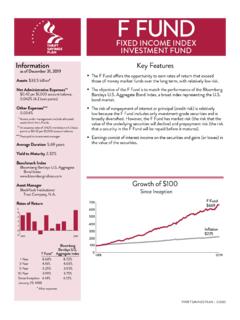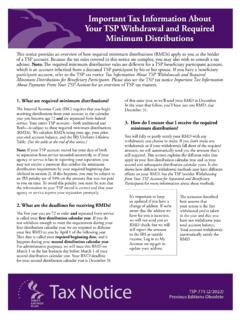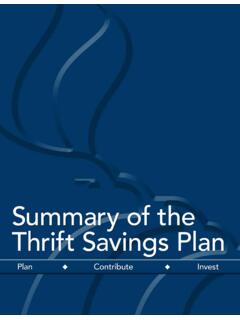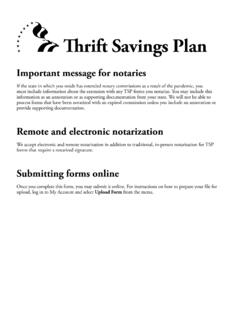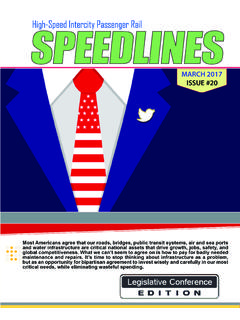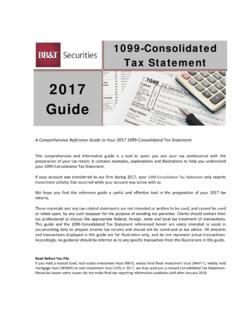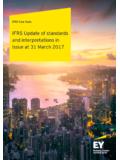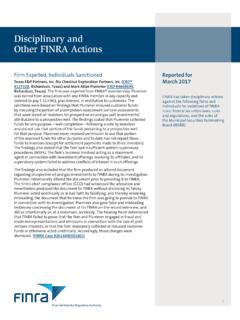Transcription of Your Plan Your Future April 2017 Do You Know …
1 your plan your Future April 2017 HIGHLIGHTSTHRIFT SAVINGS PLANTSP Website: : 1-877-968-3778 Outside the and Canada: 404-233-4400 TDD: 1-877-847-4385 @tsp4gov You probably know how you want to spend your retirement. But how much will you need to spend when you get there? We d like to offer a few things to consider as you determine how much you might need to save for a comfortable retirement, and some strategies for how to get a GoalPlanning for your retirement can be a challenge, but a good place to start is by determining your replacement rate.
2 That s the percentage of your pre-retirement income you ll need when you re no longer working. Most experts say that you ll need to replace about 70% 85%1 of your current income. For example, if you make $75,000 a year, you ll likely need to replace $52,500 $63,750 annually in YourselfAsk yourself the following questions to get a general sense of what your financial needs might be in retirement: When I reach retirement age, will big expenses like my mortgage or my children s college tuition be paid for? Will I have long-term care costs? How long do I expect to live in retirement?
3 Do You Know How Much is Enough? How might inflation affect my savings? How might taxes affect my savings? Assess your Income SourcesAfter you ve determined your replacement rate and have an idea of what your financial needs might be in retirement, consider your current and Future income sources, such as your TSP account, Social Security benefits, and your Basic TSP AccountCurrent: Log into My Account at to see your most up-to-date TSP balance. While you re there, check Page 1 of your most recent annual statement in the Statements section and review the Will you be ready for retirement?
4 Estimate. This estimate shows you how much money your TSP balance would provide you on a monthly basis throughout your : Visit the Calculators section of and use our How Much Will My Savings Grow? calculator to estimate the growth of your TSP account. your Social SecurityCurrent: Register for my Social Security at to review your most current earnings record and have access to other useful information about your Social Security : You can view your most current estimated Social Security benefit at full retirement (age 67) by logging into my Social Security at Basic PensionCurrent: If you re a FERS employee, after you retire, you ll receive a pension based on your salary and how long you worked for the federal government.
5 Visit to learn more about how this benefit is : The Federal Ballpark E$timate calculates a projected summary of your Basic Pension, TSP account balance, Social Security benefit, and other financial sources that you input. To see your summary, visit 1 Government Accountability Office (GAO), Retirement Security: Better Information on Income Replacement Rates Needed to Help Workers plan for Retirement. GAO-16-242. Washington, : March, on Recycled PaperFPI-PETR ates of Return and ExpensesL2050L2040L2030L2020 LIncomeGFundFFundCFundSFundIFundRates of Return as of January 31, Administrative ExpensesGross Net1.
6 052% .038%.052% .038%.052% .038%.052% .038%.052% .038%.052% .038%.052% .038%.052% .038%.051% .038%.053%.039%Other Expenses2 .012%.011%.009%.007%.003%.000%.017%.004% .041%.014%The returns for the TSP funds represent net earnings after the deduction of administrative expenses and, in the cases of the F, C, S, I, and L Funds, after deduction of trading costs and investment management fees as of January 31, 2017 . (For more recent returns, visit Fund Performance at ) Additional information about the TSP funds; their related indexes; and their respective monthly, annual, and 10-year returns can be found in the TSP Fund Information sheets or by visiting Fund Performance at information about the TSP core funds: The Government Securities investment (G) Fund contains government securities; the Fixed Income Index investment (F) Fund contains government, corporate, and asset-backed bonds.
7 The Common Stock Index investment (C) Fund contains stocks of large and medium-sized companies; the Small Capitalization Stock Index investment (S) Fund contains stocks of small to medium-sized companies; and the International Stock Index investment (I) Fund contains stocks from more than 20 developed Net administrative expenses are the expenses charged to TSP participants per dollar invested in the respective funds after offsetting gross administrative expenses with account forfeitures and loan Fees associated with securities lending are not included in 2016 administrative expenses.
8 Consistent with standard practice in the industry, they are charged in addition to administrative expenses. The other expenses represent fees paid to the investment manager for administering securities lending programs. Income earned from these programs improved the returns of the Sources: Don t forget to include IRAs, your military pension, retirement plans from previous employers, and other personal investments when calculating how much you currently have and ReviseNow that you have an idea of how much you ll have in retirement, ask yourself if that amount equals 70% 85% of your current income.
9 If so, then you re on the right track. If not, determine the amount of additional savings you ll need in order to make up the difference. Below are some strategies you might want to use to bridge the gap: If you re a FERS employee, consider contributing at least 5% of your salary so that you receive your agency s full 5% match. Think about increasing your TSP contributions each time you receive a pay raise. Depending on your investment earnings, raising your savings rate by as little as 1% of your pay could mean tens of thousands of dollars over time. Age 50 or over and already contributing the maximum amount allowed?
10 Consider making catch-up contributions. In 2017 , you can contribute up to $6,000 more than the Internal Revenue Code s annual elective deferral limit, which is $18, the CourseRemember that investing for retirement is for the long term. Try not to let short-term market movements steer you off To receive retirement savings tips throughout the month, be sure to like us on Facebook at tsp4gov, and follow us on Twitter is Financial Literacy Month!course. Once you ve made your plan , stick to it and only make adjustments after careful consideration. Visit the Planning & Tools section of to learn more about saving for the retirement that you ve always wanted.
